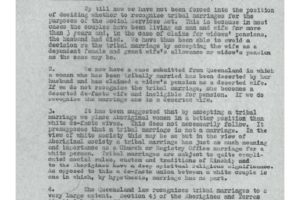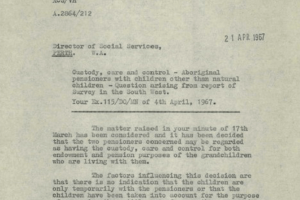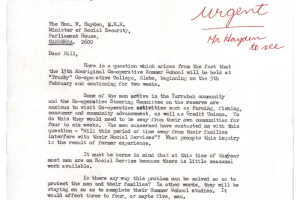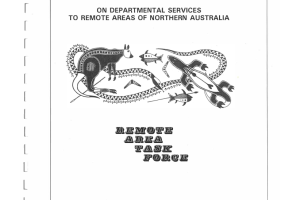
Artefacts about Family Supports
In the 1960s, DSS was questioned about their policy of not supporting multiple wives within Aboriginal marriages. They wouldn’t review their policy for years to come.
In a series of letters, officials discussed providing government payments to Aboriginal grandparents raising grandchildren.
Getting access to payments often relied on direct advocacy. Letters from the principal of an Aboriginal co-operative school provide examples.
Aboriginal and Torres Strait Islander people used government payments to gain further rights and freedoms. Activist Joyce Clague’s story reveals how payments became linked to land rights.
The Standing Committee on Aboriginal Affairs questioned a high-level DSS official in 1973 and 1975. They touched on a range of issues relevant to Aboriginal people receiving payments.
Researchers interviewed Aboriginal families in Adelaide about their housing, income, government payments and work as part of a wider study into poverty in Australia.
After DSS stopped recording the number of Aboriginal people receiving payments, the shadow minister criticised the department and asked about people missing out.
DSS commissioned a report from the Remote Area Task Force in 1986. They recommended changes to support a more regular income flow to Aboriginal and Torres Strait Islander customers and to recognise cultural practices.







